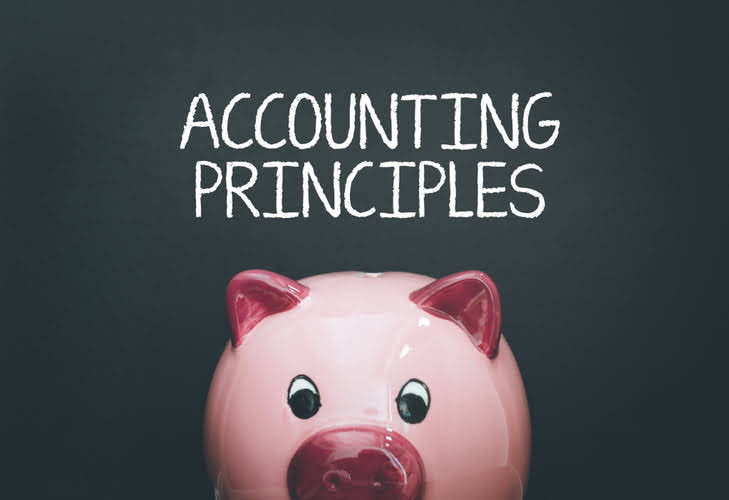US GAAP vs IFRS Differences + Cheat Sheet

The two main sets of accounting standards followed by businesses are GAAP and IFRS. Accounting standards are critical to ensuring a company’s financial information and statements are accurate and can be compared to the data reported by other organizations. Unlike IFRS, transactions of an unusual nature are defined as possessing a high degree of abnormality and of a type clearly unrelated to, or only incidentally related to, the ordinary and typical activities of the entity. Unlike IFRS, significant events or transactions that are unusual and/or occur infrequently are presented separately in the income statement or disclosed in the notes. Unlike IFRS, SEC regulation[2] prescribes the format and minimum line items to be presented for SEC registrants. For non-SEC registrants, there is limited guidance on the presentation of the income statement or statement of comprehensive income, like IFRS.
- When the IASB sets a brand new accounting standard, several countries tend to adopt the standard, or at least interpret it, and fit it into their individual country’s accounting standards.
- Here’s a look at the two primary sets of accounting standards—GAAP and IFRS—and how they compare.
- PwC refers to the US member firm or one of its subsidiaries or affiliates, and may sometimes refer to the PwC network.
- By furthering your knowledge of these accounting standards through such avenues as an online course, you can more effectively analyze financial statements and gain greater insight into your company’s performance.
- Up until 1998, TSAI had employed conservative revenue recognition practices and only recorded revenues from agreements when the customers were billed through the course of the 5-year agreement.
- This is different for IFRS; under this standard, the presentation of expenses is done either by function or nature.
- KPMG has market-leading alliances with many of the world’s leading software and services vendors.
If a corporation’s stock is publicly traded, financial statements must also adhere to rules established by the U.S. When the IASB sets a brand new accounting standard, several countries tend to adopt the standard, or at least interpret it, and fit it into their individual country’s accounting standards. These standards, as set by each particular country’s accounting standards board, will in turn influence what becomes GAAP for each particular country. For example, in the United States, the Financial Accounting Standards Board (FASB) makes up the rules and regulations which become GAAP. How a company reports these figures will have a large impact on the figures that appear in financial statements and regulatory filings.
How Are Expenditures Related to Research and Development Treated Under U.S. GAAP vs. IFRS?
Lastly, companies should provide an explanation of the nature of the amount and why the item has been classified in this manner. Another accounting policy election is the presentation of expenses by either their function or nature. This determination should be based on which approach is most relevant and reliable and often depends on the company, the industry in which it operates and its users’ needs. The IFRS allows for judgment when determining gaap vs ifrs income statement what to present and how to present it, rather than prescribing a format or specifying all the possible items. Even though the IFRS does not define gross profit, operating results, or many other common subtotals, there’s flexibility under this standard when adding and defining new line items in the income statement. The best way to think of GAAP is as a set of rules that companies follow when their accountants report their financial statements.
This roadmap provides a comparison of IFRS and US GAAP—two of the most widely used accounting standards in the world—and the most significant ways they diverge. The way a balance sheet is formatted is different in the US than in other countries. Under GAAP, current assets are listed first, while a sheet prepared under IFRS begins with non-current assets. If you want to further your accounting knowledge, it’s critical to understand the standards that guide how companies record transactions and report finances.
GAAP and IFRS also differs in terms of discounting of revenue
It is only possible to characterize items as unusual or exceptional under specific conditions. The presentation of expenses by function or nature is another factor difference between IFRS vs GAAP income statements. The US GAAP has no requirement for expenses to be classified according to their function or nature, rather expense classification requirements are prescribed by SEC regulations. This is different for IFRS; under this standard, the presentation of expenses is done either by function or nature. This determination, however, should be based on which approach is most relevant and reliable and usually depends on the company; that is the industry in which the company operates and its users’ needs. There are some key differences between how corporate finances are governed in the US and abroad.

This is true under IFRS as well, however, IFRS also requires certain R&D expenditures to be capitalized (e.g. some internal costs like prototyping). Perhaps the most notable difference between GAAP and IFRS involves their treatment of inventory. IFRS rules ban the use of last-in, first-out (LIFO) inventory accounting methods. Both systems allow for the first-in, first-out method (FIFO) and the weighted average-cost method.
What are the Similarities Between US GAAP and IFRS?
GAAP does not allow for inventory reversals, while IFRS permits them under certain conditions. Receive the latest financial reporting and accounting updates with our newsletters and more delivered to your inbox. On the Radar briefly summarizes emerging issues and trends related to the accounting and financial reporting topics addressed in our Roadmaps. A company’s cash flow statement is also prepared differently under GAAP and IFRS. Deciding which set of standards to use depends on whether your company operates in the US or internationally. Work is being done to converge GAAP and IFRS, but the process has been slow going.
- This determination, however, should be based on which approach is most relevant and reliable and usually depends on the company; that is the industry in which the company operates and its users’ needs.
- Under this method, companies present the cost of sales separately from other expenses.
- The most commonly used accounting standards are International Financial Reporting Standards or IFRS and Generally Accepted Accounting Principles or GAAP.
- For example, derivatives executed with the same counterparty under a master netting arrangement may be offset, unlike IFRS.
- For example, finance costs and finance expenses are generally presented gross; so are other income and expenses.
- For example, in the United States, the Financial Accounting Standards Board (FASB) makes up the rules and regulations which become GAAP.
While GAAP and IFRS share many similarities, there are several contrasts, beyond the regions in which they’re applied. Harvard Business School Online’s Business Insights Blog provides the career insights you need to achieve your goals and gain confidence in your business skills. The Revenue Recognition Standard, effective 2018, was a joint project between the FASB and IASB with near-complete convergence. It provided a broad conceptual framework using a five-step process for considering contracts with customers and recognizing revenue.



